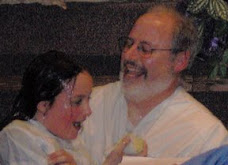Pastor's Take-away
Marvelous in Our Eyes
Solomon’s temple was thought to be one of the great wonders of the
world. It stood several centuries before it was destroyed by the Babylonians. It
was soon rebuilt, using the old foundations, but lacked its Solomonic splendor.
Centuries later, King Herod the Great destroyed a major section of it as he
usurped the Jewish throne. This gave him the opportunity to become a great
temple builder. He expanded the temple’s original borders and integrated the
temple walls into Jerusalem’s fortifications. The new temple was spectacular, a
remarkable testimony to human engineering.
Herod
completed the main temple structure about the time of Jesus’ birth, but the
construction process was not brought to completion for another 50 years.
Ironically, the temple itself was tragically destroyed by the Romans in A.D.
70, just a decade after its completion, underscoring the truth of the psalmist’s
claim, “Unless the Lord builds the house, the builders labor in vain” (127:1).
Ultimately, no matter the grandeur, no matter the time or circumstance,
the Jerusalem Temple is
but a shadow of God’s heavenly temple. In fact, the Bible depicts a magnificent
eschatological (end-time, ideal) temple in Ezek
40-48. The language is highly figurative and stresses the essence of Temple theology, that God dwells in the midst of
his people. Indeed, just verses after describing the New Jerusalem (Rev
21), the Revelator declares that there is no temple there, “because the Lord
God Almighty and the Lamb are its temple.”
Jesus himself appropriated the essence of Temple theology for himself
and his Church. Since Temple theology is encapsulated as God’s
dwelling among his people, Jesus makes his disciples into the new,
eschatological temple, for where two or three are gathered in the name of Jesus, God is present with them. Thus,
Peter writes, “You are coming to Christ, who is the living cornerstone
of God’s temple. He was rejected by people, but he was chosen by God for great
honor. And you are living stones that God is building into his spiritual temple”
(1 Pet 2 NLT).
Accordingly, we believers, united together in
Christ, are God’s new temple. Thus Paul writes,
“Don’t you know that you yourselves are God’s temple and that God’s Spirit
dwells in your midst?” (1 Cor 3). To be sure, God’s Temple is in need of
continuous cleansing, just like the Jerusalem temple. Nonetheless, this
eschatological New Temple, God’s Church, is built upon the great CORNERSTONE. It
is marvelous to our eyes, and the gates of hell will not prevail against it.













